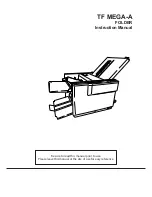
Differential Feed
Your Baby Lock serger is equipped with differential feed.
The sets of feed dogs work independently in order to ensure
smooth sewing on all fabrics. (fig. A)
When the differential feed adjusting lever, located at the ma-
chine's right, front edge is set on "N" for normal feeding, the
feed dogs move the same distance. This is the setting to
use for most fabrics and applications. (fig. B)
When the differential feed lever is set above "N", the front
feed dog will feed more fabric than the back. This is becau-
se the front feed dog moves a greater distance than the
back feed dog. As a result, the fabric becomes compressed
or eased, as the diagram on the front cover indicates. This
action can eliminate wavy seams in stretchy fabrics or those
cut on the bias grain.
At the maximum setting of 2.0 (fig. C), the differential feed
can gather a lightweight fabric to nearly double fullness.
(fig. D)
The front feed dog is actually feeding in twice as much
fabric as the back feed dog is feeding out. To maximize
the gathering effects, use the longest stitch length setting.
Fabric weight will affect the gathering. Test stitch for desi-
red results.
When the differential feed lever is set below "N" (fig. E), the
front feed dog moves less distance than the back feed dog.
This adjustment stretches the fabric slightly as it is sewn,
pulling it taut as it enters the needle. The lower settings pre-
vent puckers on lightweight fabric (fig. F), add more stretch
to swim wear, active wear, and can be used to create a let-
tuce edge. (see page 26)
A
A
D
D
FF
B
B
C
C
E
E
11
O
V
E
R
V
I
E
W
Содержание Victory BLS3
Страница 1: ...Model BLS3 Model BLS3 ...
Страница 54: ...Notes 52 ...
Страница 55: ...Notes 53 ...
Страница 56: ...BLS3 EI 48 En Printed in Japan ...














































